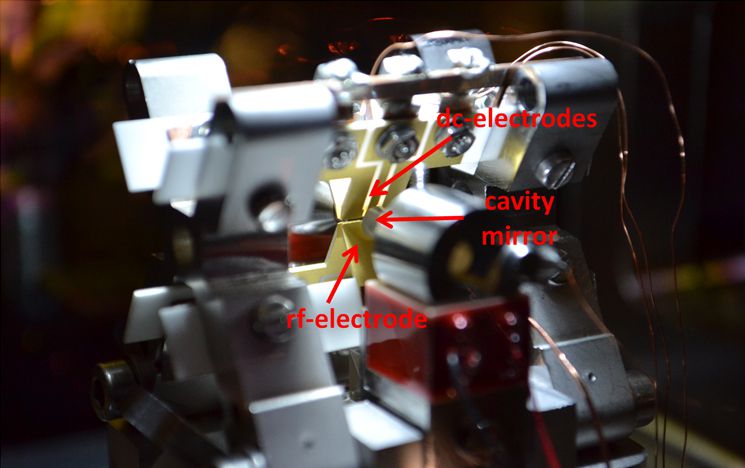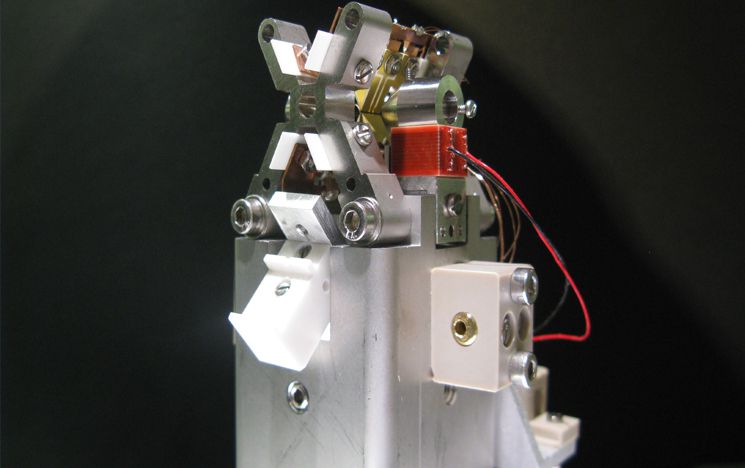Deterministic ion-photon interface
Our main objective with this experiment is to use single trapped and laser-cooled ions for temporary storage and manipulation of quantum states (quantum information) and to use freely propagating photons to transmit this quantum information over long distances.
An ion strongly coupled to the mode of an optical cavity in the context of cavity QED provides the link that can be used for mapping the quantum information from the state of a trapped ion onto a photon state and back again. For this mapping to be successful the exchange of quantum information between the light field mode in the cavity and the electronic states of the ion has to be faster than the quantum information is dissipated through other loss channels.
The rate of this quantum information exchange is determined by the coupling strength between one photon the cavity mode and the ion. To increase the coupling strength and enter the so-called “strong coupling” regime the volume occupied by the photon wavepacket needs to be as small as possible or in other words having the cavity mirrors closely spaced. In current experiments ion traps combined with cavities have a mirror spacing of about 10 mm. With this experiment we aim at a mirror spacing of about 0.5 mm.

Ion trap with integrated optical cavity
Closely spaced cavity mirrors to obtain strong coupling requires a small ion trap structure because the mirror substrates perturb the trapping fields. The distance between ion and electrodes in this ion trap is about 0.1 mm.

Deterministic ion trap